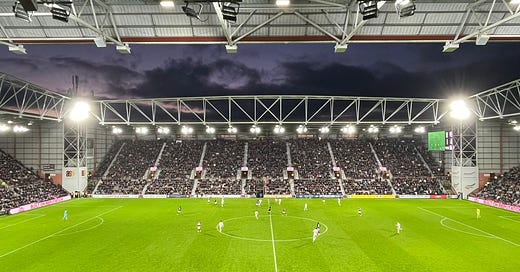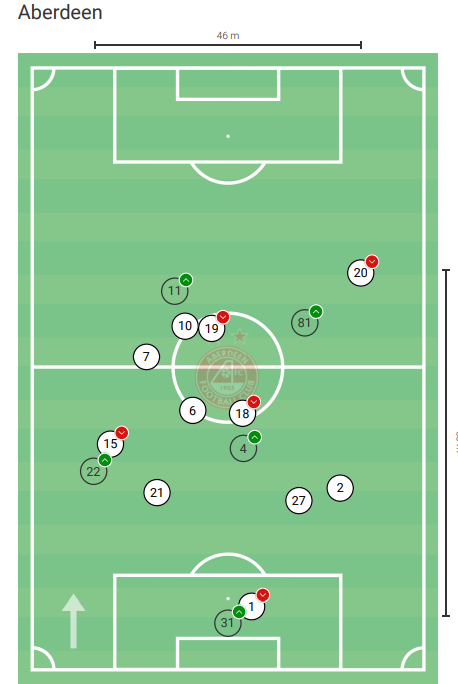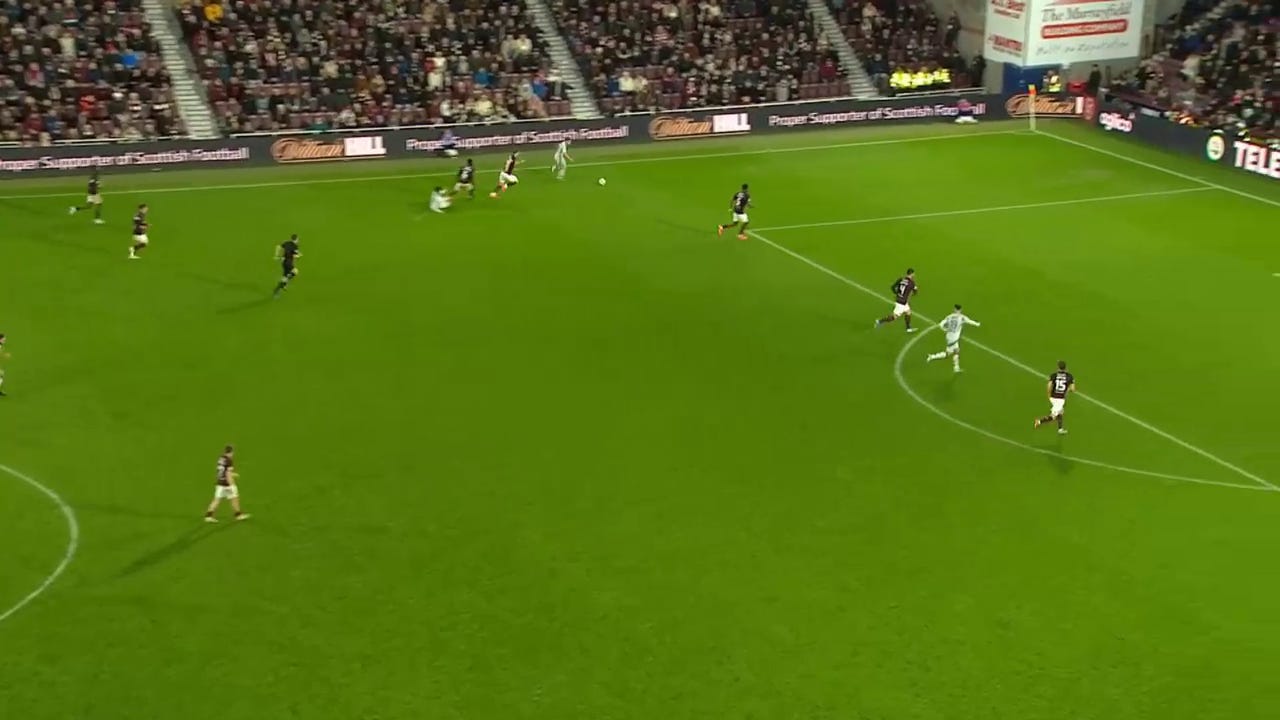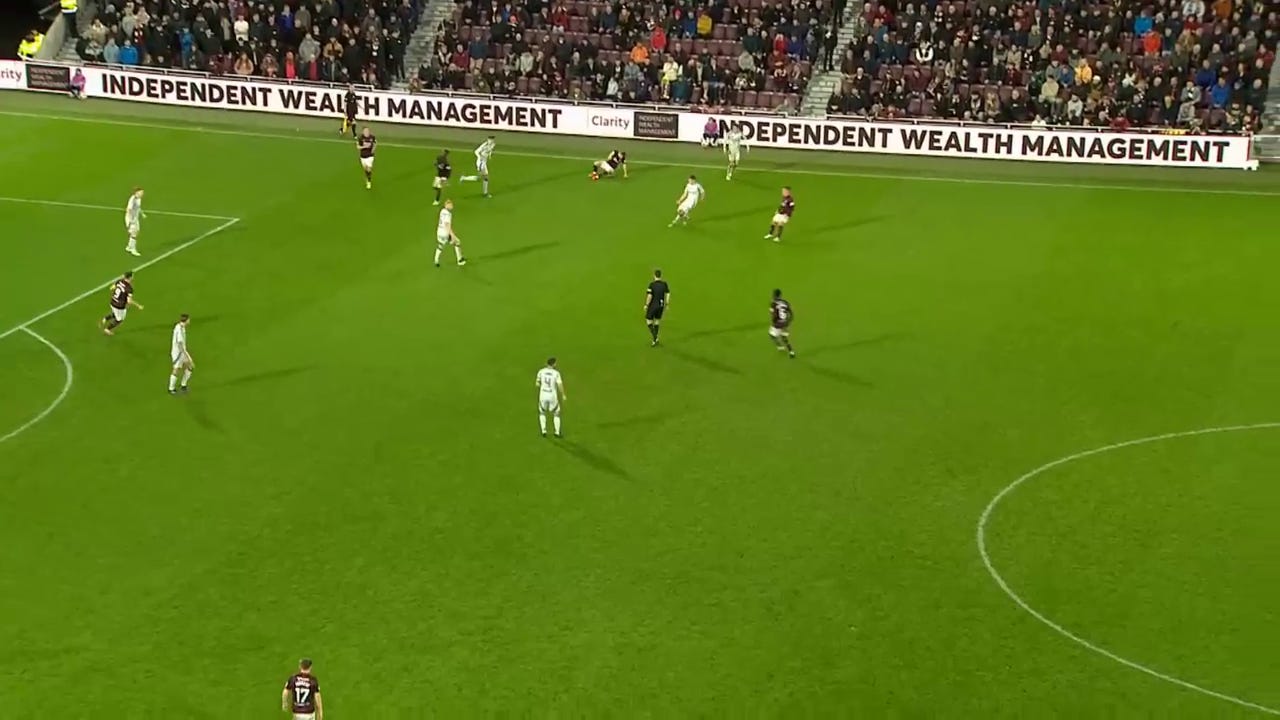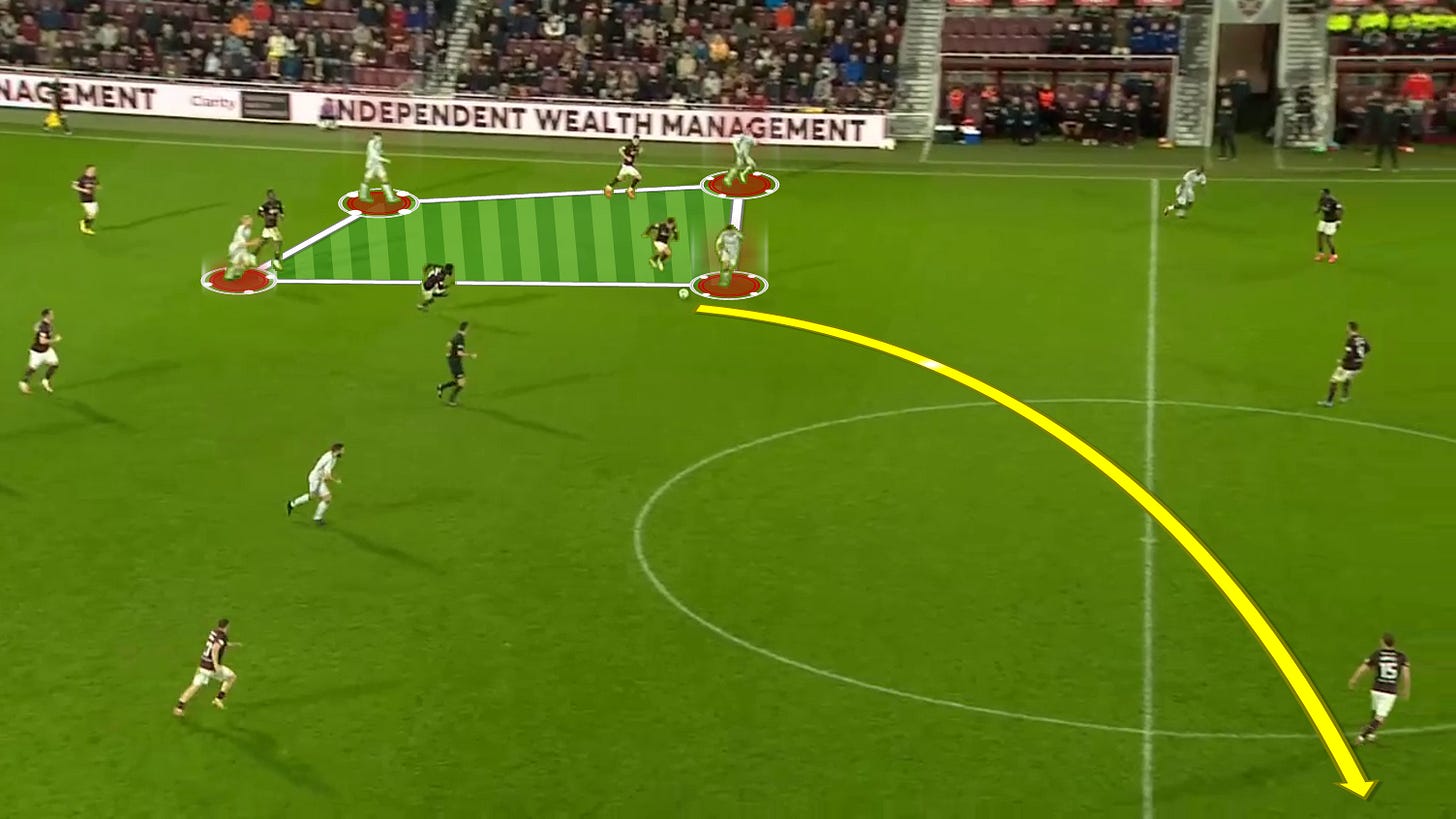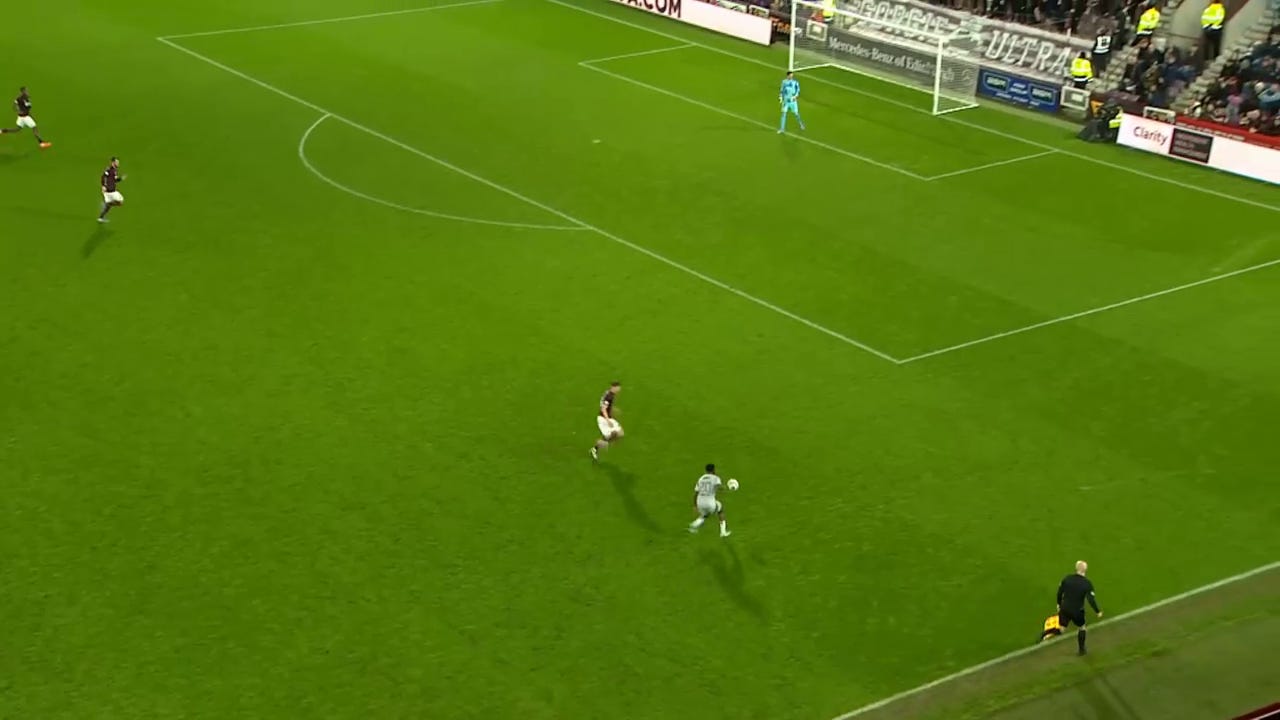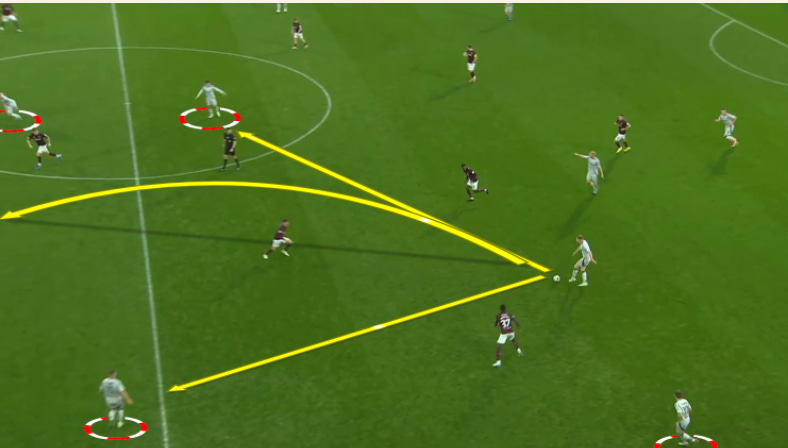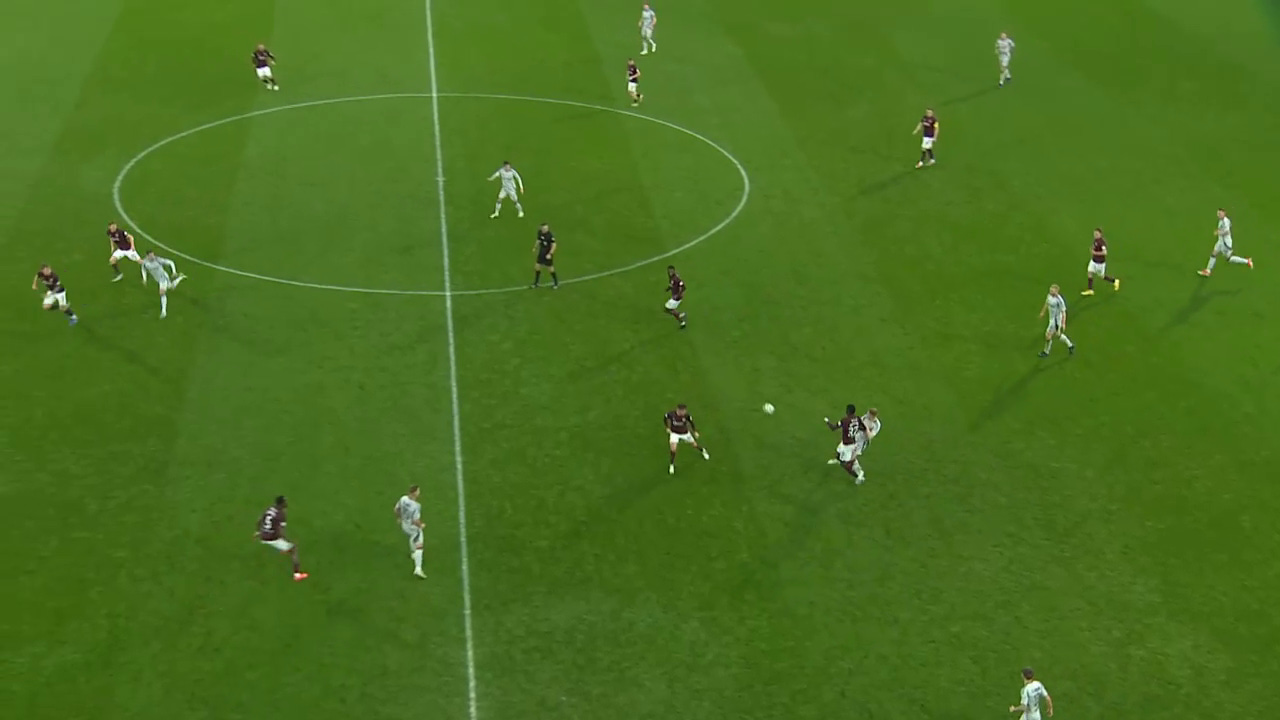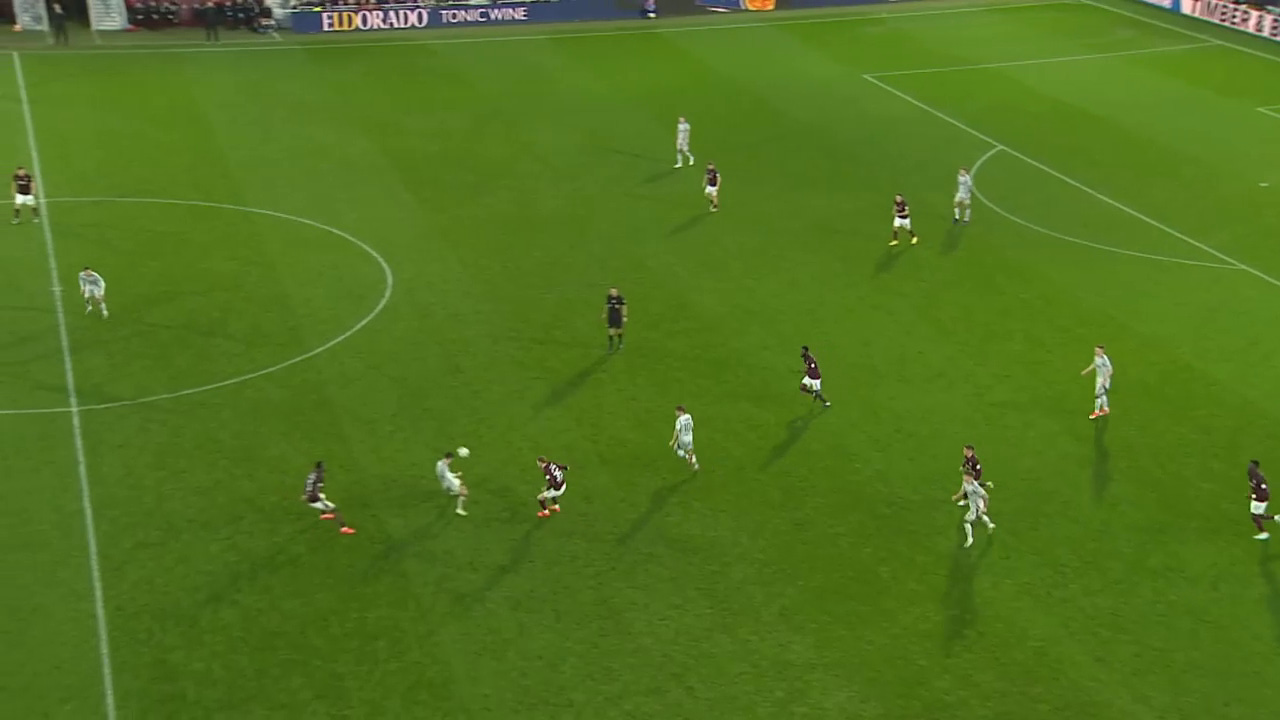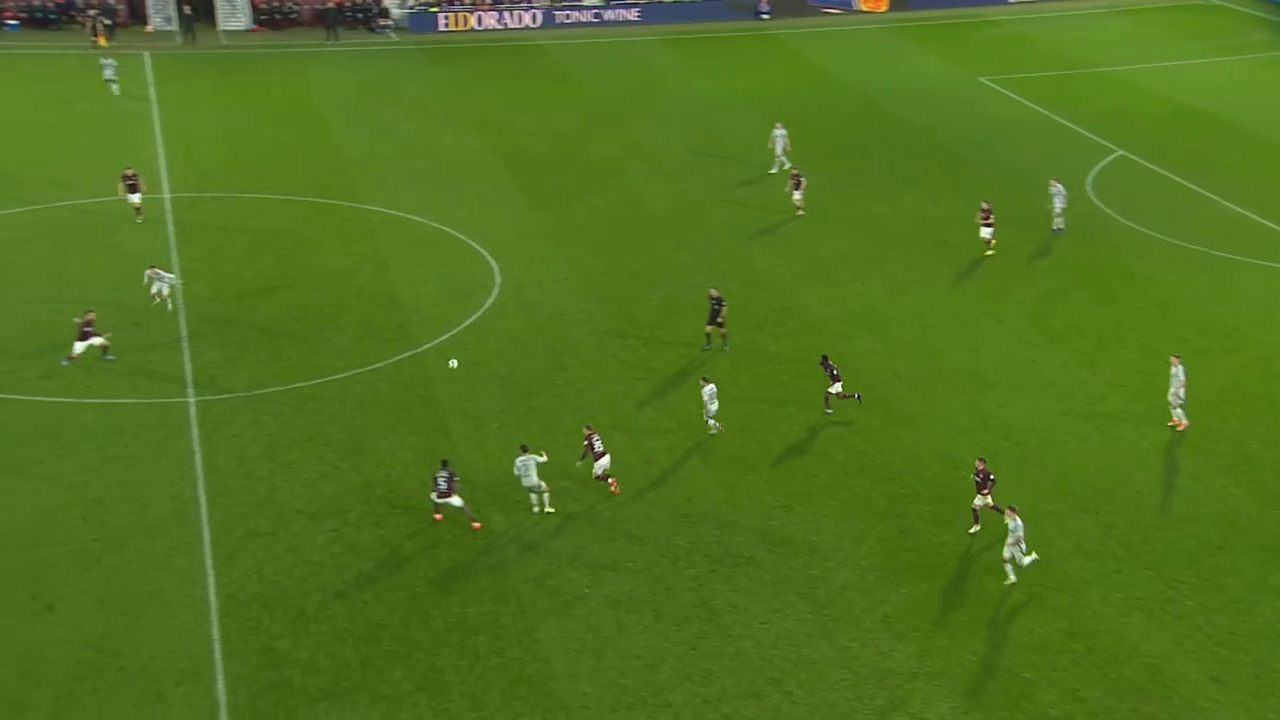Sunday’s point against Hearts remains open to your own interpretation. It can be seen as two points dropped against the division’s bottom team or a point gained at a difficult away venue and the rot-stopping of a losing run.
My initial perspective was that this was a very poor game of football and perhaps Aberdeen’s worst performance of the season. Losing Dimitar Mitov was obviously a blow but Hearts were missing one of their best players this season in James Penrice, lost another in Frankie Kent and had to rejig their back four a couple of times during the match. But for some last ditch defending Aberdeen would have left Georgie with nothing.
On the rewatch, as usually happens, the emotion is tempered. The positives were some nice passages of play, a good goal and aside from the one conceded, they looked more secure with balls into the box. There was a lot of sloppy play, poor decision making, and maybe, dare I say it, some poor substitution timings and choices but the biggest issue was that we just didn’t create enough.
So I’ve decided to take a closer look at that topic, specifically in relation to the team’s build up from deeper areas.
Stats Corner
From the first watch I thought the team continuously gave possession away when we made the decision to try and break the lines. The numbers concur. Sunday was one of Aberdeen’s worst days for number of progressive passes. According to Wyscout:
A pass is considered progressive if the distance between the starting point and the next touch is:
at least 30 meters closer to the opponent’s goal if the starting and finishing points are within a team’s own half
at least 15 meters closer to the opponent’s goal if the starting and finishing points are in different halves
at least 10 meters closer to the opponent’s goal if the starting and finishing points are in the opponent’s half
Not only was the number of progressive passes low (59), the number completed (36) and percentage (61.02%) was also one of the lowest.
Passing into the final third was also a problem. At 18 entries, this is tied for lowest in the league this season, but as you can see at Parkhead, Aberdeen were much more efficient.
The Dons did win some of those games with lower numbers and lost one with pretty high numbers but they only won one out of the five games with the lowest final-third entries.
Aberdeen In Possession
The way I see it there are four main methods to score a goal:
Set-piece
High regain in opposition half
Counter attack from your own half
Build up from deep
I won’t be covering set-pieces today. For #3 and #4 the aim is to exploit space, disorganization, and a numerical advantage, quickly. We’ve seen some good examples of #2 (Keskinen v Dundee) this season and the odd rapid counter-attack (#3) (Gueye v Motherwell) but not as many as I was expecting under Thelin. This could well change.
Both of these are harder to plan for. There will be some clear principles established in regards to movement but there’s more responsibility on the players to show invention in these circumstances.
#4 Build up from Deep, is something that’s easier to prepare and plan for given what you know about the opponents pressing habits. Some teams may look to press high on goal kicks but for the most part the default position of Aberdeen’s opponents is to be in a mid-block, when one of the two centre-backs has the ball and ready to pounce when the ball goes into central areas or full-backs.
So let’s take a look at the build up in the context of Sunday’s game.
Aberdeen’s Tactical Setup
We talk about a 4-2-3-1 but as we know out of possession it’s really a 4-4-2 (although there were signs that may be changing too yesterday). On the ball, it’s more like a lopsided 4-2-2-2 which is even more pronounced when Clarkson and McGrath play together. See the average position map for Sunday.
Aberdeen Build-Up Strategies
Within this the Thelin ‘game-model’ from what I have seen so far this season, revolves around these three main strategies.
Number 1: Progress the ball through the left side, retain the ball in that zone and then use combinations to create a crossing or cutback opportunity.
Think of the McGrath goal against St. Mirren last week.
This sees four players, usually McGrath, Clarkson, MacKenzie and Nilsen creating an overload on that side. See below from two minutes in.
It’s a mini-possession square or ‘Rondo’. 4v3 sometimes 4v2 as you can see from the diagram below. To get from there into the crossing opportunity they employ a variety of combinations, patterns and on the fly game intelligence. It requires players to be comfortable receiving and passing the ball in tight spaces.
Success on Sunday took a bit of a hit with the absence of MacKenzie however McGarry actually grew into the game after a nervous start and had some good attacking moments later in the first half.
Here’s them at it again later in the game.
In the above example Milne found Clarkson (on touchline) who did a one-two with McGrath and then put a cross in.
Number 2: Use the overload on the left side to create an opportunity to switch the play to the right
This is harder but potentially very lucrative when you have Shayden Morris in the team. We didn’t see too many examples of this on Sunday but here’s one in the second half.
The Dons were under pressure in the corner but were able to work it into Nilsen who played a cute pass behind Cammy Devlin into Clarkson.
Clarkson then switches to Morris who’s in a 1v1 situation.
The ball needs to be quickly moved and the control of the player at a high level to bring it down. Morris seems to be improving that part of his game too as he dealt with a few difficult balls quite well in the second period.
Number 3. Bring out through a centre-back or a dropping midfielder and by pass midfield and find the forward for a quick combination with the attacking midfielder.
Yeah, need to come up with some snappier titles.
Hearts did press Aberdeen, certainly more so in the second half but the Dons still were able to get their centre backs on the ball in space. The Jambos were not willing to squeeze quite that high.
You’ll often see Aberdeen work the ball across the back four to try and find the right time to progress forward, or in the case of the video below, they will drop deeper when the midfielders turn out of a congested space and then look to progress from there.
This is a mythical, perfect scenario, but we’ve seen elements of it throughout the season. Aberdeen don’t tend to try and work a lot of short passes in the central area in the opposition half. They look to bypass and then employ the up-back-through combination.
This I think is an area where things went wrong on Sunday. Here’s an example with Molloy early in the game. This is a pretty promising position. McGrath is inside in space, McGarry ahead also in space, Sokler looking for a ball over the top and Clarkson a safe option to the side.
Instead he takes too long to make the decision and the ball is lost.
This would be an example of an individual error but you can see how the positioning creates the opportunity.
Here’s some better viewing from Molloy and a good example of the combo I’ve been discussing. McGrath is just out of shot here.
Molloy finds his fellow Irishman and we have Clarkson with the third man run.
Unfortunately McGrath gets the header wrong and Hearts can clear but you can see the potential had he been able to find Clarkson. Morris is in space, Sokler is on the shoulder. Hearts are 2v2 at the back with a big speed disadvantage.
This does not come from a counter-attack but from provoking a press to then exploit space further up the field. Those short passes at the back do have a purpose.
So What Actually Went Wrong on Sunday?
I think the two above examples illustrate some of the finer details that Jimmy is ironing out. There were some new faces, some tired legs. Technically and tactically there were some bad decisions. Some of the ideas were right, but were not able to be executed. Thelin said as much post-match:
“When it’s an intense game and we’re not fully there, then we can make these small, small mistakes and that can also give momentum for Hearts”.
I also think the nature of the game, very stop starty. The tight Tynecastle pitch, all may have had an impact too.
And Hearts did press. And that makes things harder. I didn’t have time to go into that in this piece but of course it was a contributing factor. In games like this, I do wonder if a forward who can hold the ball up well would be an advantage.
Summary
I’ve been meaning to really take a look at Aberdeen’s build up play in more detail since the start of the season. These are just my interpretations and terms and I’m still trying to figure out a lot of what Thelin is doing but it helps me try and recognise some of the on-field patterns and maybe you too. There’s another episode in this, on the movements at the back to help get into one of these three situations, but that’s a story for another day.
The Sunday games are a little harder to turn things around and with Celtic on Wednesday, I wanted to get something out today. I’m going to try and do a small piece on that game to come out tomorrow morning. Apologies in advance for bombarding your inbox.
COYR


